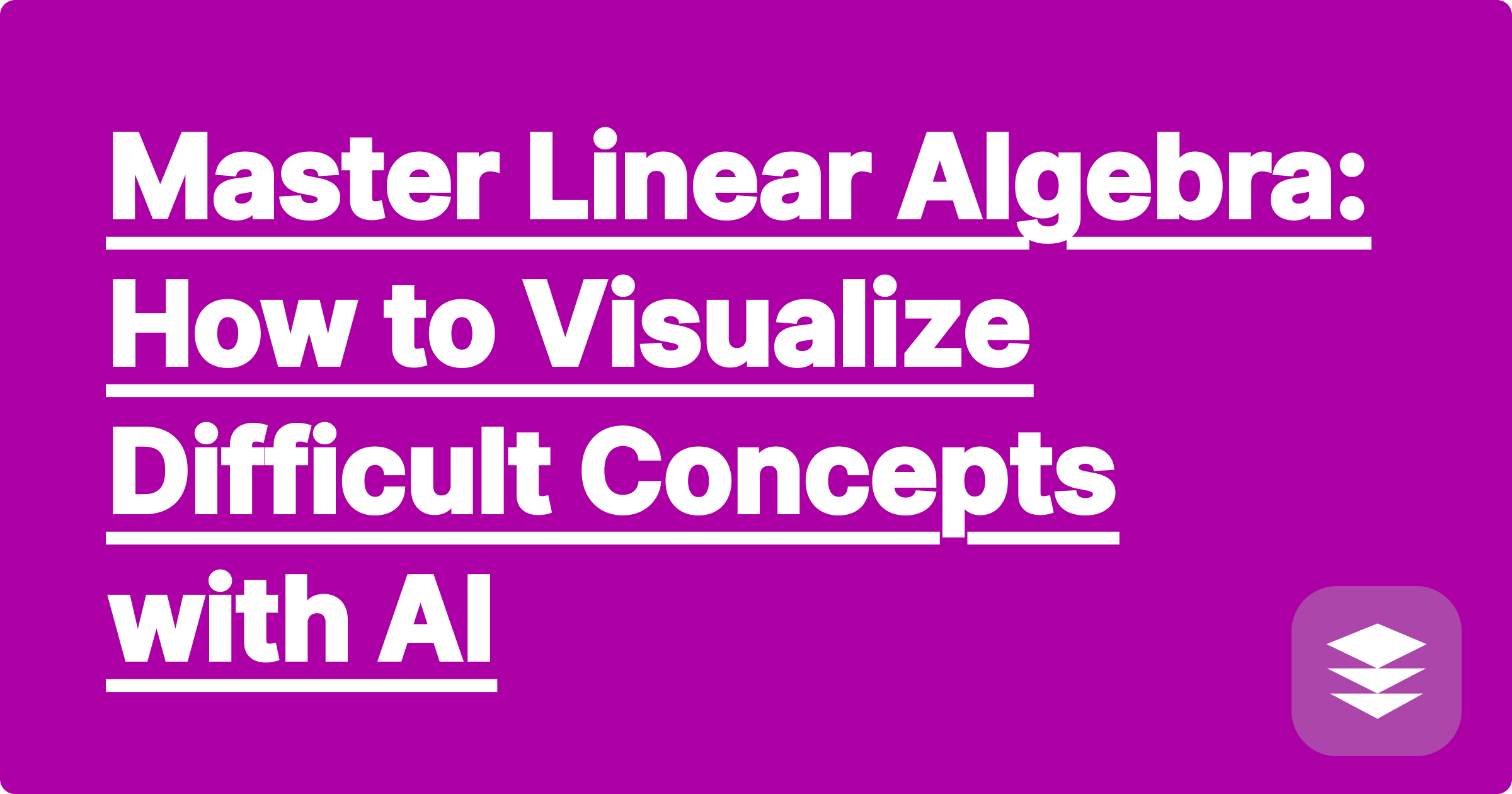
Linear algebra is the language of modern science and engineering. But for many students, it’s a subject of pure, abstract frustration. You can perform the calculations for a matrix multiplication or find the eigenvalues of a transformation, but what does it all mean? What are you actually doing?
If you've ever felt lost in a sea of brackets and variables, you're not alone. The key to truly mastering linear algebra isn't just memorizing formulas; it's visualizing them. It's about seeing a matrix not as a grid of numbers, but as a transformation that stretches, rotates, and shears space.
The problem is, creating these visualizations is difficult. But now, with a powerful linear algebra visualization tool powered by AI, you can turn abstract concepts into intuitive, interactive graphics, finally bridging the gap between calculation and comprehension.
Unlike the physics of a falling apple, the concepts in linear algebra don't have obvious real-world analogues.
Without visualization, you're left with rote memorization, which is a fragile foundation for such a critical subject.
A modern AI tool like GPAI Solver is more than just a matrix calculator step by step. It's an engine that can translate the results of its calculations into meaningful visualizations, helping you build a deep, intuitive understanding.
Here’s how AI can help you visualize three core concepts:
Imagine you have a vector [2, 1] and a transformation matrix [[0, -1], [1, 0]].
[Image: A simple 2D plot generated by GPAI Solver. It shows an original vector (e.g., in blue) pointing to (2,1) and a new, transformed vector (e.g., in red) pointing to (-1,2), with a curved arrow indicating the 90-degree rotation. Alt-text: A linear algebra visualization tool showing a vector transformation.]
Eigenvectors are the "special" vectors of a matrix.
What does it mean for two vectors to be linearly independent?
"I finally understood what an eigenvector was when GPAI showed me a picture. I saw all the other vectors getting knocked around, but the eigenvector just stayed on its line and got longer. It clicked in a way that no textbook ever could."
Q1: How does the AI generate these visualizations?
A: When you ask GPAI Solver to solve a linear algebra problem, it doesn't just compute the answer. It also generates the necessary data points and instructions for a plotting library (like Plotly.js). This data is then rendered as a clean, interactive graph right alongside the step-by-step solution.
Q2: Can I use this as just a matrix calculator step by step?
A: Absolutely. If you only need the calculation, the step-by-step solution provides a clear, easy-to-follow breakdown of every arithmetic operation, from finding the determinant to inverting a matrix. The visualizations are an added layer for when you need deeper conceptual understanding.
Q3: Is this useful for other subjects besides linear algebra?
A: Yes! The same visualization principles can be applied to plotting functions in calculus, showing vector fields in physics, or creating statistical charts for data analysis.
Linear algebra doesn't have to be a source of abstract confusion. By using a powerful AI visualization tool, you can peel back the layer of numbers and see the beautiful, intuitive geometry that lies beneath. This is the key to moving beyond memorization and toward true mastery.
Ready to finally see what your matrices are doing?
[Try GPAI Solver today. Use our step-by-step matrix calculator and see your concepts come to life with AI visualizations. Sign up now for 100 free credits.]
Cheatsheet Templates vs. AI-Generated: Which Is Better for Exams?
How to Organize a Semester's Worth of Notes with the AI Builder
The Perfect Study Aid for Visual Learners: AI-Powered Diagrams & Mind Maps
Last-Minute Cram Session? How AI Can Help You Pass Tomorrow's Exam
How to Tackle Your Calculus II Homework in Under an Hour
Organic Chemistry Reactions, Simplified by AI
How to Ace Your Coding Assignment with an AI Python Tutor
How to Write a Flawless Lab Report with AI-Powered Data Analysis
Master Linear Algebra: How to Visualize Difficult Concepts
Missed a Lecture? Here's How to Catch Up Instantly with AI